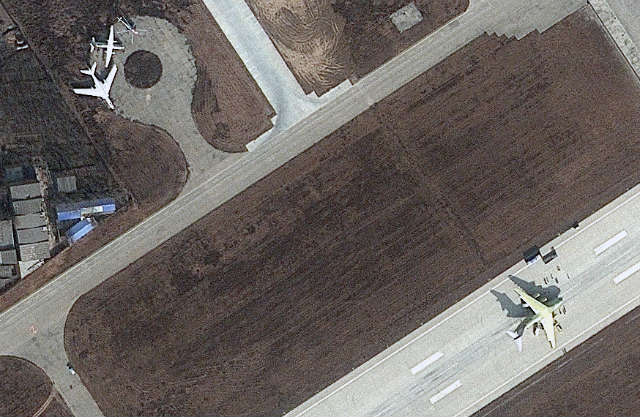Few aircraft are as intriguing - and vexing - as the prototypes that periodically appear at Chinese airfields. The most recent example to have set China' blogosphere abuzz is the Xian Y-20 strategic airlifter, a type that could one day enhance Beijing's ability to project power as far abroad as the Indian Ocean and even Africa.
The first appearance of the four-engined heavy lifter - China's largest indigenous aircraft to date - occurred on Chinese defence websites in the last week of 2012. Apparently taken from the cover of a copse of grass, the grainy images were reminiscent of those that revealed the Chengdu J-20 fighter during the last week of 2010.
With remarkable alacrity, Beijing confirmed the existence of the new aircraft on 2 January. "We are developing large transport aircraft on our own to improve the capability of air transport," China's defence ministry said. It gave no indication as to when the aircraft could be deployed, but confirmed that "research and development is going forward as planned".
 |
|---|
| GeoEye |
Unsourced reports suggest that there are two prototypes of the Y-20, with one to be used for flight tests and the other for static tests. It is unclear, but unlikely, that the type has yet conducted its maiden flight.
Following Beijing's confirmation of the aircraft, US satellite imagery firm GeoEye emailed journalists and bloggers photos shot by its Ikonos and GeoEye-1 satellites showing the aircraft on the runway at China's Yanlian air base.
GeoEye's images confirmed the general layout of the Y-20, with four turbojet engines and a high T-tail. One of the pictures contains several other Chinese aircraft types, including Xian H-6 bombers. Using the known dimensions of the H-6 as a gauge, the Y-20 appears to have a wing span of between 45m (147ft) and 50m. This suggests that the developmental type has a larger fuselage than an Ilyushin Il-76, but that it is slightly smaller in dimensions than the Boeing C-17.
"Beijing is definitely trying to move up from the Il-76," says one regional defence aerospace expert, referring to a type currently flown in limited numbers by China's air force. However, the capability the new aircraft could eventually represent depends on a range of factors, such as whether it is optimised for short field performance like the Il-76, which greatly increases the weight of the Russian type.
The dimensions of the Chinese aircraft's cargo hold and systems for cargo handling are also of crucial importance, the source says.
The Y-20's power plant is a source of some conjecture, with most pundits speculating that the prototype is powered by the Russian-made Soloviev D-30s used aboard Tupolev 154M airliners and the improved Il-76MD. An afterburning version of the same engine also powers the Russian RAC MiG-31.
A production version of the Y-20 could transition to using a higher bypass ratio engine, with potential candidates to potentially include China's developmental WS-18 and WS-20 engines. Another option could be developing a military variant of the CJ-1000A, an indigenous power plant for the Comac C919 airliner that is being developed by AVIC Commercial Aircraft Engine.
In September 2011, Comac said the high-bypass CJ-1000A will be capable of producing up to 44,000lb-thrust (196kN). This is considerably greater than the 28,000-30,000lb thrust of the C919's launch power plant, the CFM International Leap 1C. It also would exceed the C-17's Pratt & Whitney F117's certificated maximum performance of 40,400lb.
Richard Bitzinger, senior fellow of the Military Transformations Programme at Singapore's Rajaratnam School of International Studies, notes that engines tend to be the "Achilles heel" of Chinese aircraft programmes.
"The aerodynamics and production involved in this aircraft are within China's technical capabilities," Bitzinger says. "The issue will be more around value-added systems, such as engines, advanced flight controls and avionics."
Beijing's swift confirmation of the Y-20's development made no mention of its obvious military role, instead having focused on the asset's potential as a humanitarian relief platform. Nevertheless, if fully developed the Y-20 could fill a major gap for the Chinese military, which currently has negligible airlift capabilities relative to the world's leading air forces.
As such, the project represents an important step in China's quest to modernise its military.
Source: Flight International



















